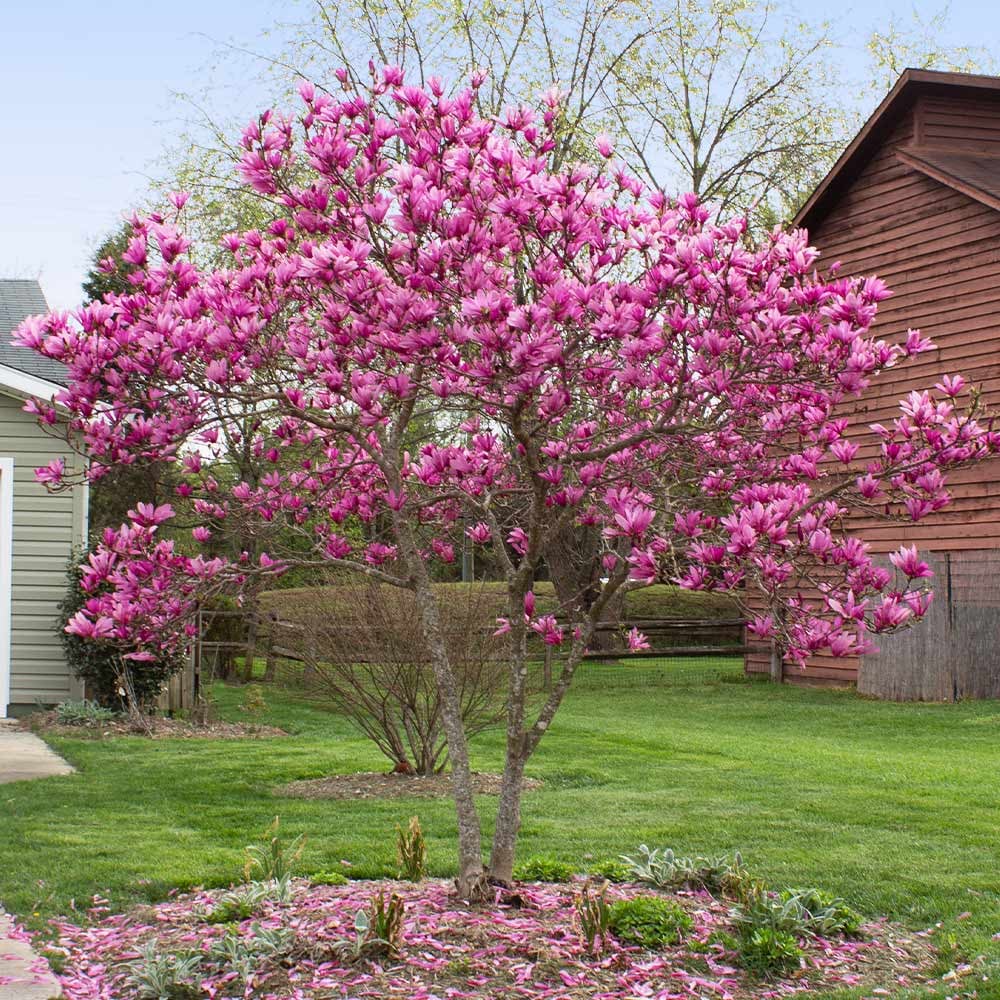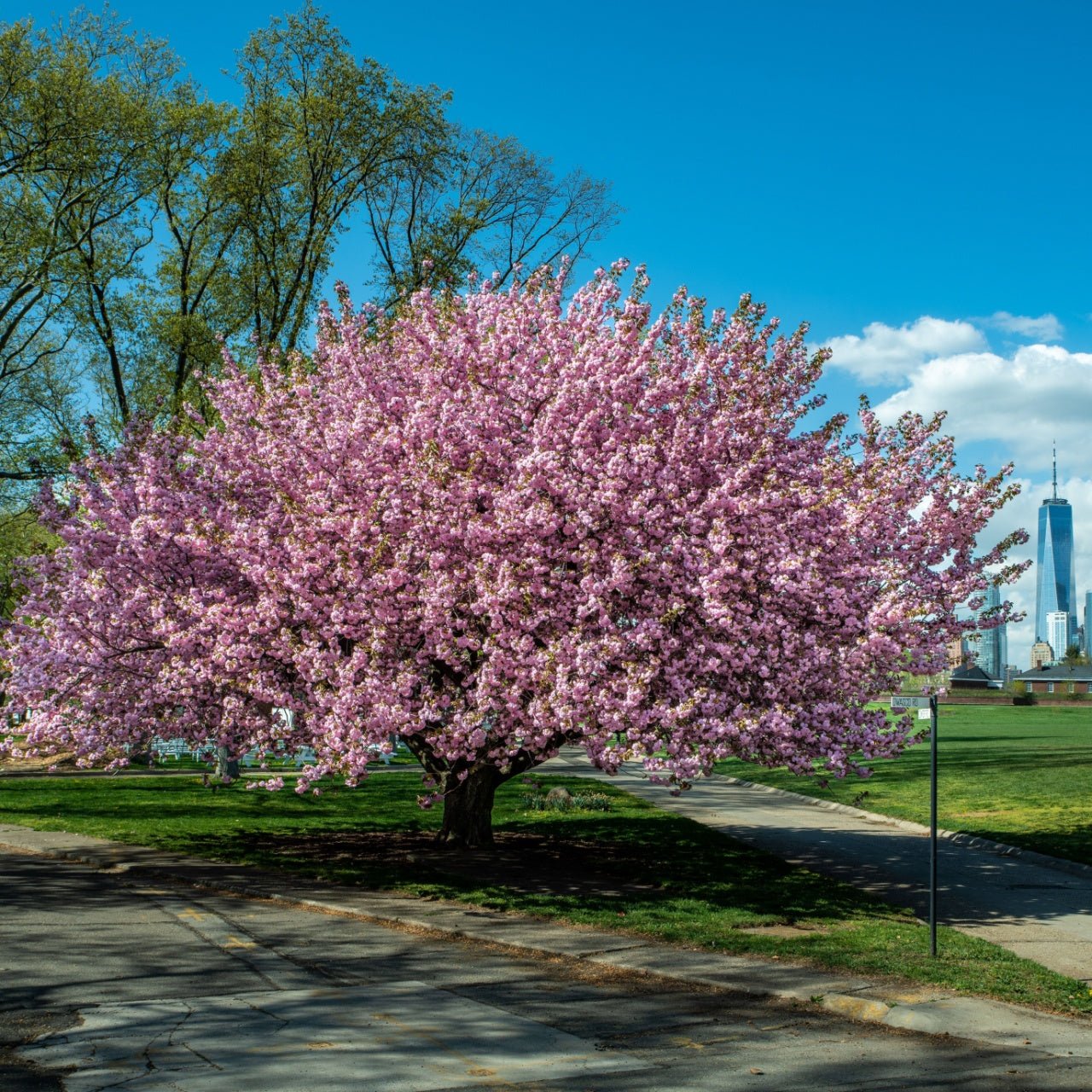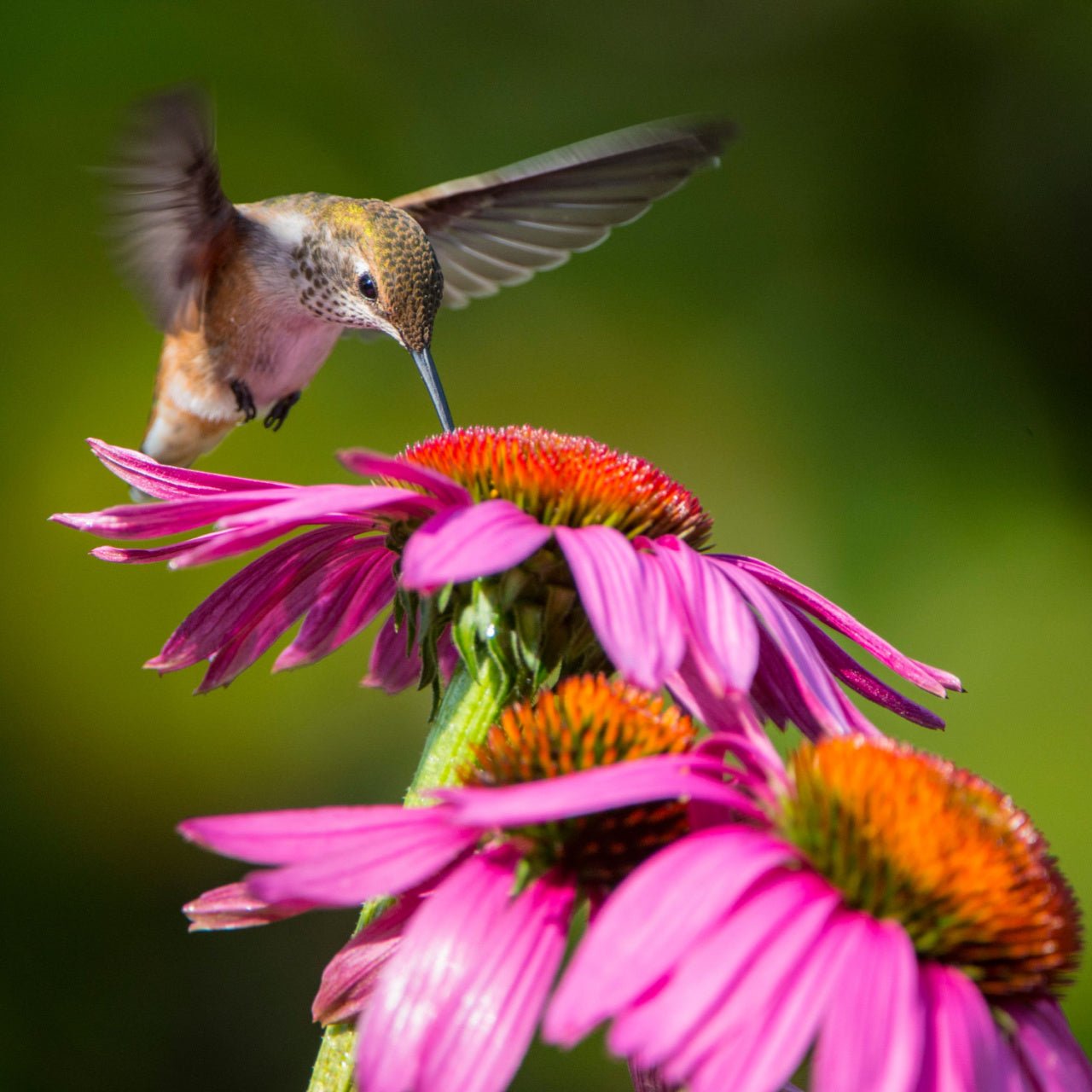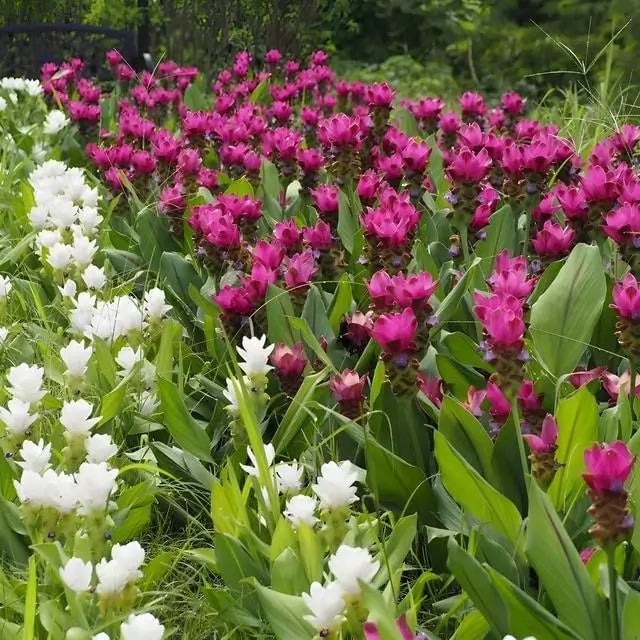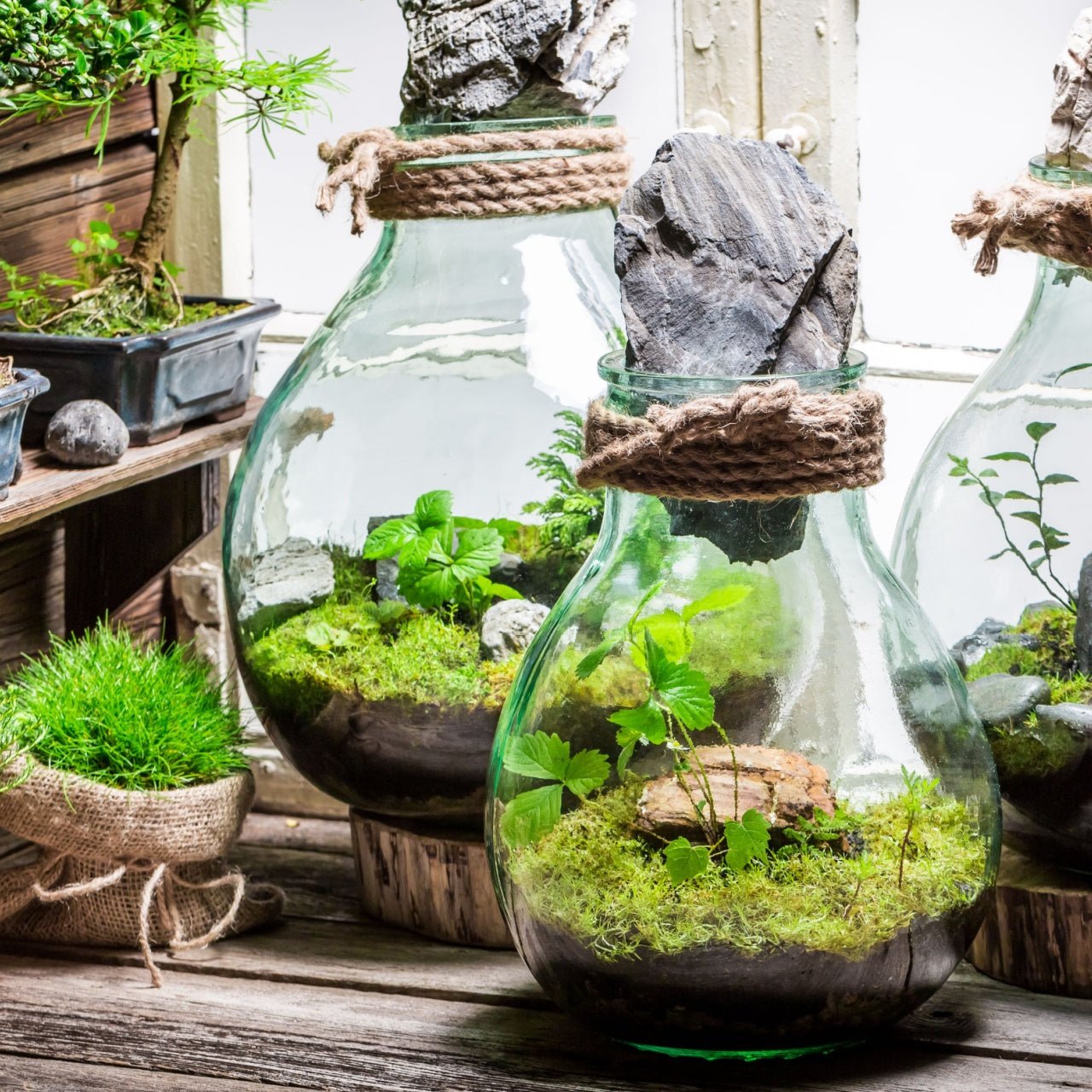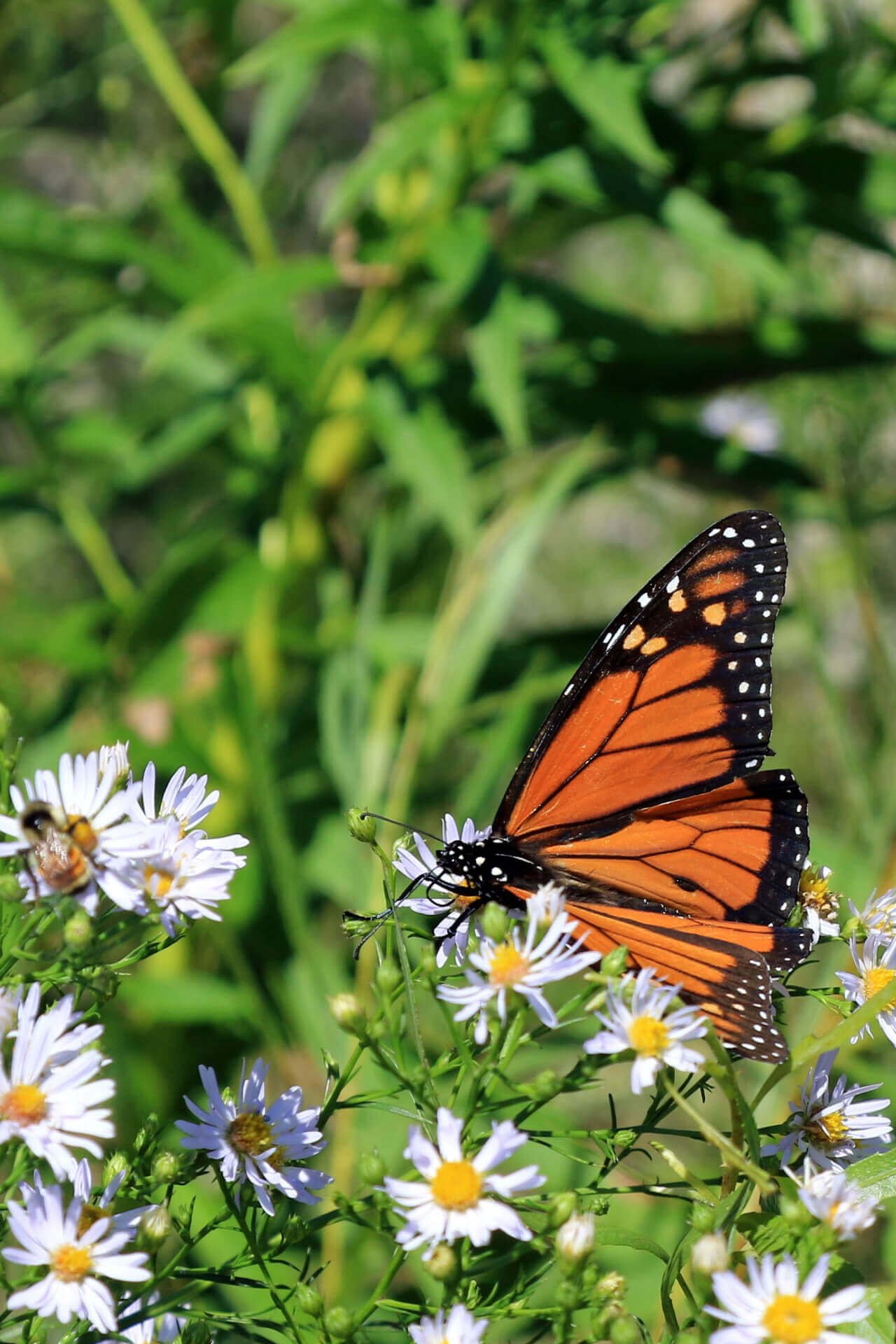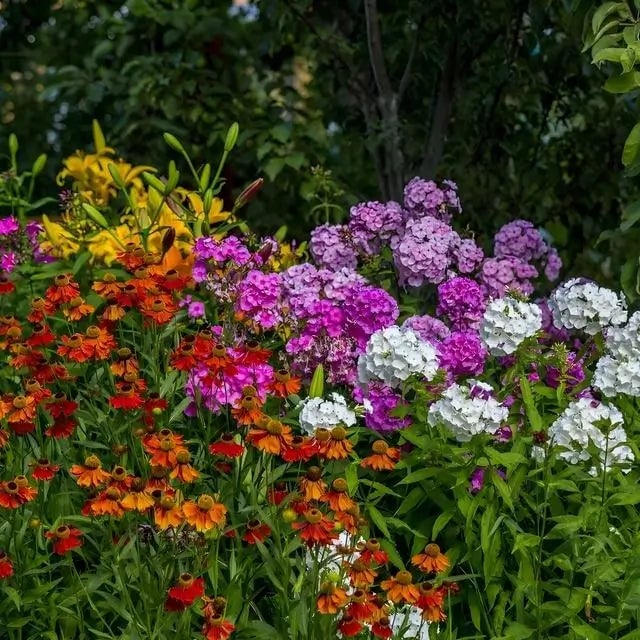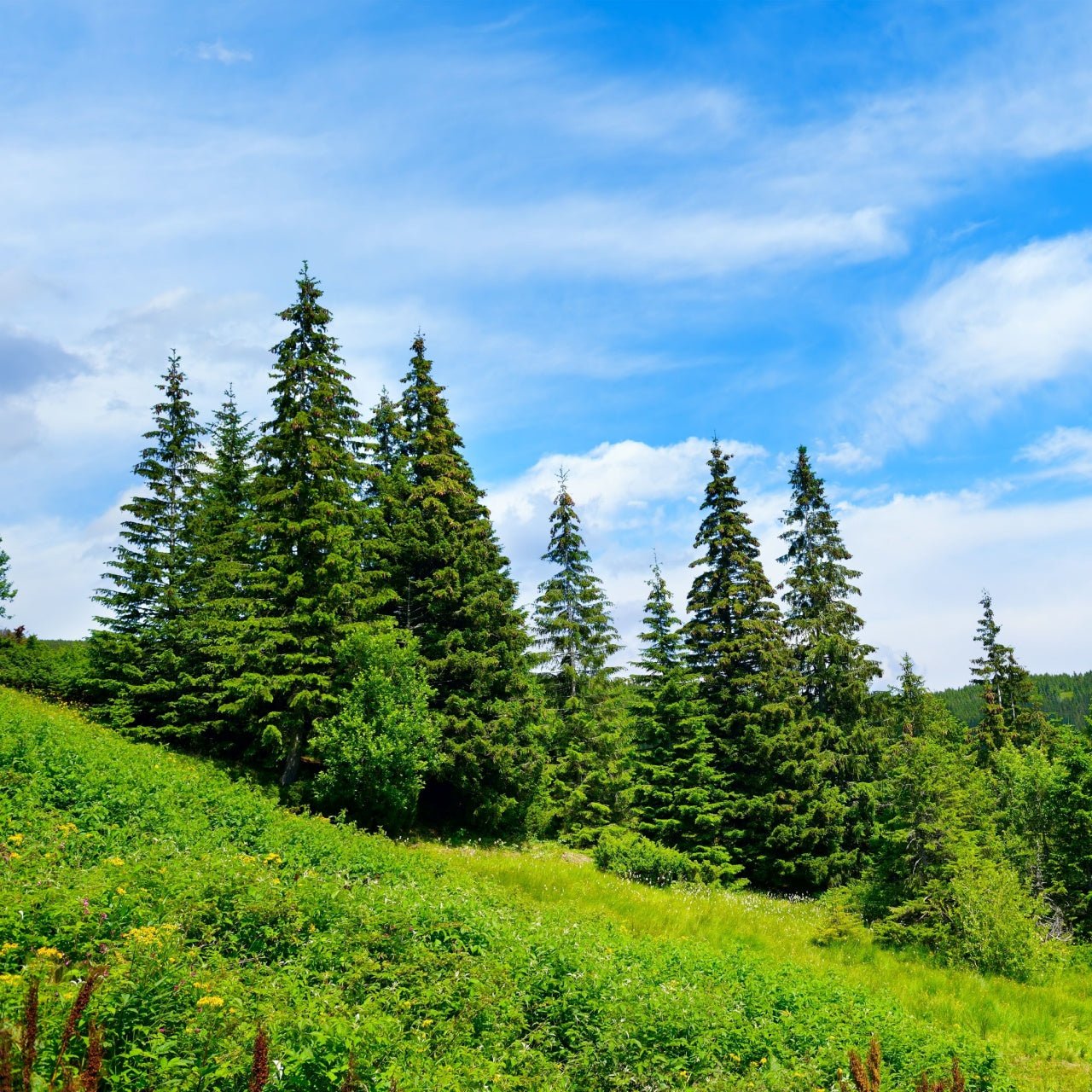
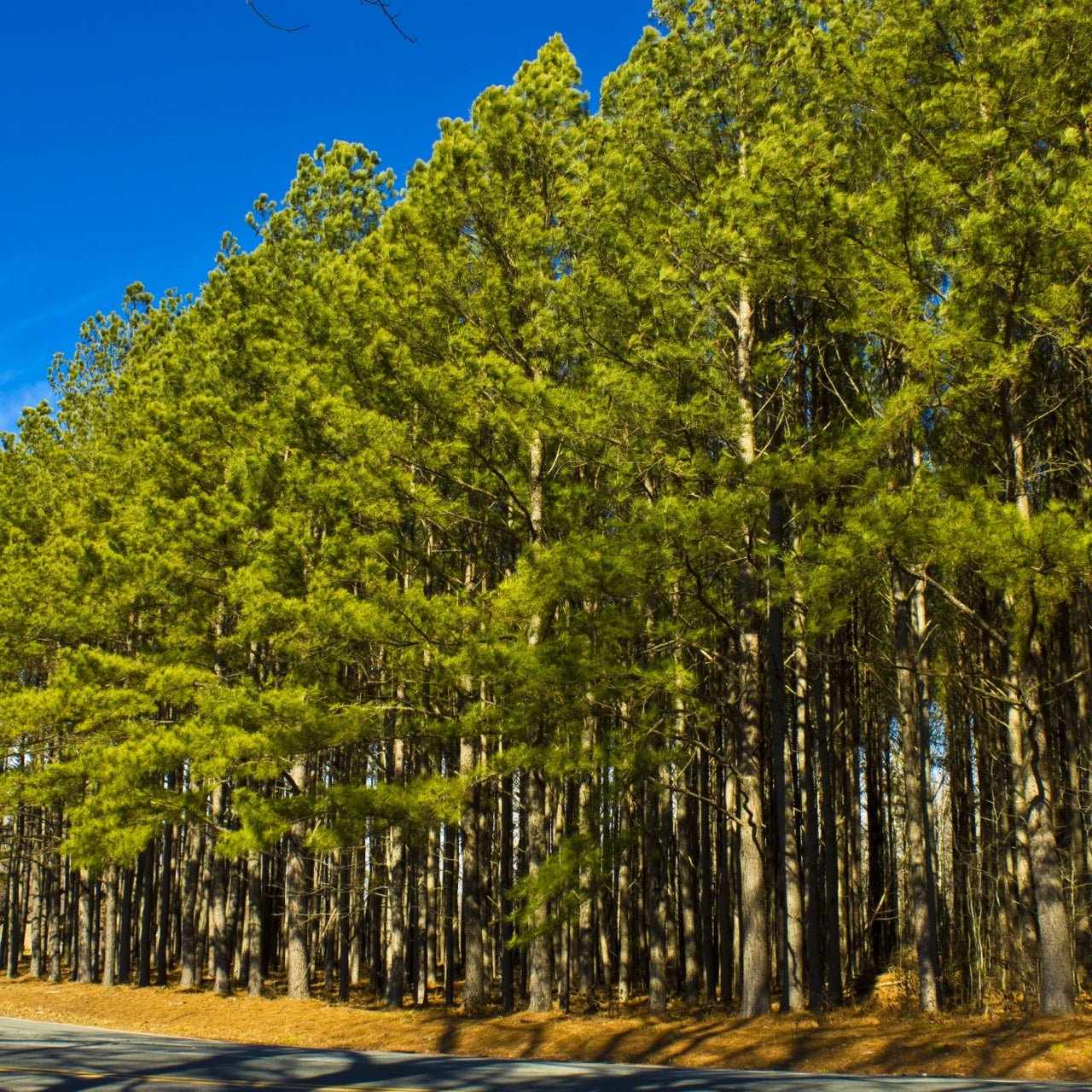
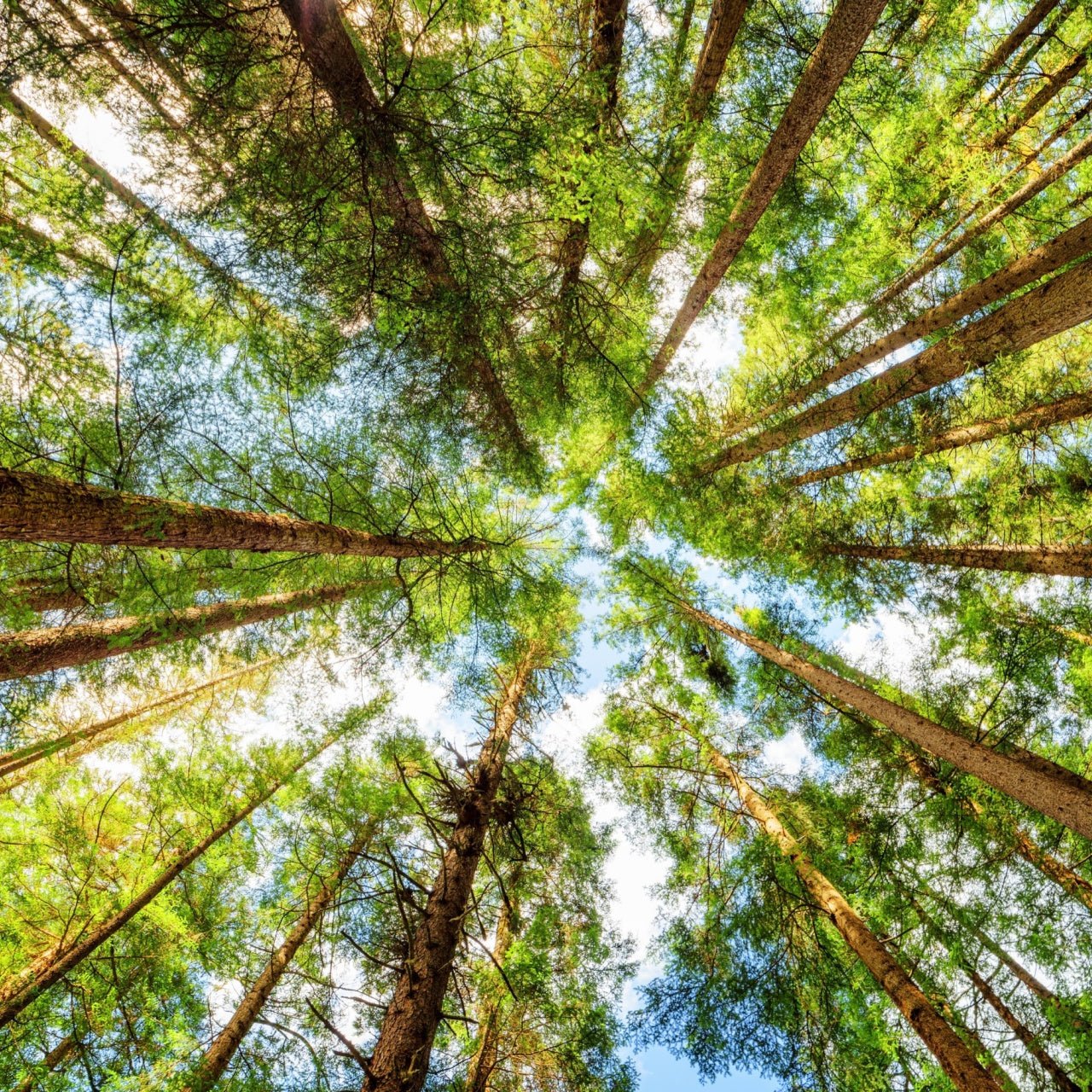
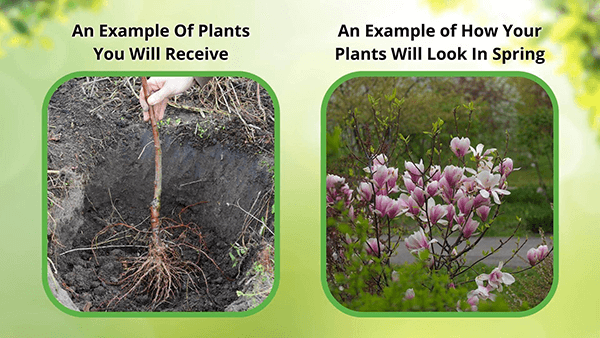

Pine Trees
Thrives in Zones 2 - 9
Enhances soil with organic matter
Low-maintenance and drought-tolerant
Year-round green beauty and shade
Ships in
November 2025Pine Trees - Pinus
Pine Trees are extremely common North American trees. Within the pinus genus, there are estimated to be over one hundred species of tree. The differences between these species are small but specific, relating to the amount of needles, cone scale thickness, what time the cones open, or even the presence of a prickle on the scale of the seed. These remarkable trees are also commonly called “evergreen trees” because their green needles retain their color all year round. Their seasonal changes are confined to their reproductive patterns, and otherwise the trees remain the same in all weather and seasons.
Plant Details - Pine Trees
Family: Pinaceae
Light Requirement: Full sun
Water Needs: Minimal
Height: Species dependent, 10-260 ft
Spread: Species dependent, up to 50 ft
Growth Rate: Moderate
Soil Preference: Well drained, Fertile
Season of Interest: Year round
Flower Color: Cone, Shades of brown
Fruit: Cone
Wildlife Value: Food and habitat for mammals, insects, birds and amphibians
Notable Characteristics
Pine Trees are gymnosperms, meaning they don’t produce flowers or fruit in the typical way. They reproduce through their cones, which are their version of a fruit or flower. Towards the bottom of the tree, male cones reside. These are small and spongy, and often a light brown or even pale green color. They contain pollen which blows on to female pine cones of other trees. The female pine cones have a hard, woody casing protecting the seed, and when the cone is mature it dries out and opens up, releasing the seed within. The typical “pine cones” we know are female! The bark of pine trees is often woody and scaly, and a reddish, brown color.
Landscape and Maintenance
Pine Trees are native to many areas of the world, with many species native to the United States. They are found in all areas of the United States, with some of the most common species being the Sugar Pine, Ponderosa Pine, Red Pine, Longleaf Pine, and countless others. They are remarkably drought resistant as the non-native species have fully naturalized to the area. They are a timeless, classic tree that not only provides year round interest, but also carries that memorable, pine smell that transports you to the holiday season at any time of year.
This Is How Your Plants Will Look upon Delivery

Height at Maturity
Over 25 Feet
Care
Pine trees prefer well-drained soil and moderate watering, letting the ground dry out between sessions. Trim only to clear dead branches. Look for pests like pine beetles and treat infestations promptly.
Plant Reproduction
Pine trees spread through wind-dispersed seeds from their pine cones.
How to Grow and Care for Bare Root Trees
Bare root trees are shipped dormant without soil, making them lightweight, cost-effective, and easy to plant during the cool months of early spring or fall. To begin, soak the roots in a bucket of water for 4–6 hours before planting to rehydrate them. Choose a sunny location with well-draining soil and ample space for the tree’s mature size.
Dig a hole twice as wide as the spread of the roots and deep enough to keep the root flare (where the roots begin to spread from the trunk) at or slightly above ground level. Create a small mound of soil in the center of the hole, spread the roots evenly over it, backfill with native soil, and gently tamp down to remove air pockets. Water thoroughly after planting.
Keep the soil consistently moist (not soggy) during the first growing season, and apply mulch around the base—avoiding direct contact with the trunk—to conserve moisture and suppress weeds. Stake the tree if necessary, and prune only to remove dead or damaged branches. With proper care, your bare root tree will establish quickly and grow strong for years to come.
Shipping date depends on the date displayed and chosen when you order from the product's page.
We do not accept returned plants. If you purchased an extended warranty we do accept claims, please navigate to the warranty page for instructions HERE






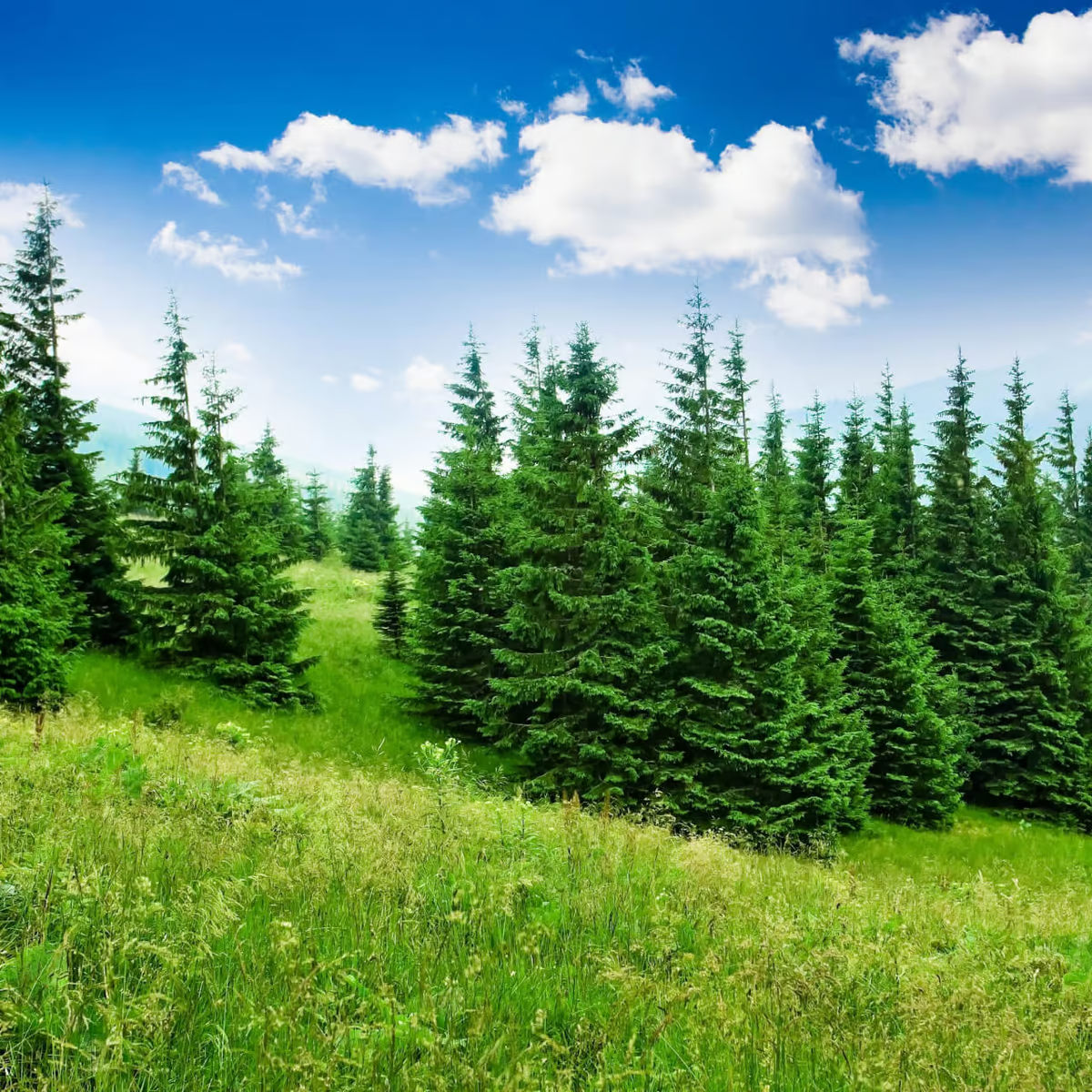
Natural Privacy Screen:
Their dense, tall growth makes pine trees excellent for creating privacy and blocking out unwanted views.
Air Quality Improvement:
Pine trees help purify the air by absorbing pollutants and releasing fresh oxygen, enhancing your outdoor environment.
Versatile Landscaping:
Pine trees add structure and beauty to various garden settings, serving as focal points, windbreaks, or natural borders.
Low Maintenance:
Pine trees are hardy and require minimal care, making them a hassle-free addition to any landscape.
Header
Use this content to share information about your store and products.
Frequently asked questions
Still have a question? Contact us here.
Yes, we ship all over the world. Shipping costs will apply, and will be added at checkout. We run discounts and promotions all year, so stay tuned for exclusive deals.
It depends on where you are. Orders processed here will take 5-7 business days to arrive. Overseas deliveries can take anywhere from 7-16 days. Delivery details will be provided in your confirmation email.
You can contact us through our contact page! We will be happy to assist you.









